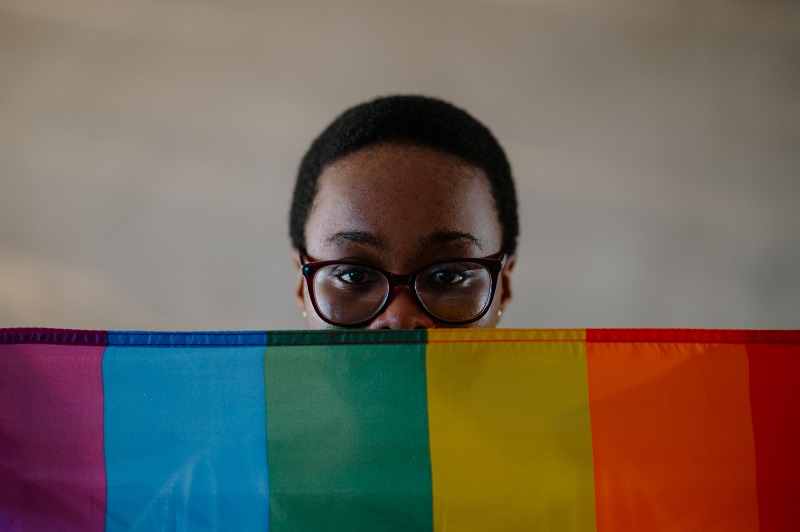In the workplace, gender stereotypes and biases have not gone away. Talented women continuously have to prove their credentials, and when they make proposals and recommendations, they have to justify them more than male colleagues would.
These are just two of many examples of gender stereotypes and bias in the workplace that Dr Jill Armstrong regularly hears about in Collaborating with Men workshops run by Murray Edwards College, Cambridge.
The initiative, delivered to large UK employers, is designed to help employees across genders to work together on resolving cultural issues and gender steretypes at work. It was launched after the all-female college’s alumni reported that workplace culture issues were a more significant barrier to career advancement than challenges relating to balancing work and family life.
Earlier this year the college released the findings of a year-long study, conducted as part of the Collaborating with Men programme. It involved nearly 6,000 male and female employees from the STEM industries, government departments, law firms, consultancies, and academia.
Around three-quarters of the women who took part said their workplace culture made it difficult to get ahead. Also, while few people were intentionally sexist, both men and women agreed they were influenced by gender stereotypes and behavioural expectations.
Behaviours down to both women and men
Jill, lead researcher, and Bye-Fellow at Murray Edwards College, says what was most surprising was that both women and men perpetrated the behaviours. She explains: “It’s not intentional, but women and men are subject to having views and expectations about what the feminine is and what the masculine is. The way that gets transcribed to individuals means that women are at a greater disadvantage.
“What also surprised me is the fact that there’s a bigger gap between senior women and senior men. More senior women perceive issues with gender bias that have impeded their career progress.”
This was, she believes, due to them experiencing the frustrations and having to prove themselves for longer.
Another issue is that gender stereotypes around perceived female strengths, such as relationships, administration, and management – rather than leadership – mean many women are corralled into areas that may not lead to promotion. And, when women behave in the same way as men, they are judged differently.
Jill cites the instance of a two-way conference call involving teams of male and female lawyers. When one of the senior women was speaking on one side of the call, the men on the other side pressed the mute button to complain about how she was too caught up in the details and not seeing the big picture.
She adds: “Later on in the call, when the less senior male colleagues made the same point, they took it. I’ve got a million of those examples.”
Don’t the men notice this behaviour? “By and large, if it doesn’t happen to you, you tend not to see it,” Jill explains. “Unless you’re the kind of person who has had reason to think about this, because there are other ways in which you are part of an outgroup, or just because you’re attuned to this and want to do something about it.
“So, it was interesting that the statistics show that the proportion of men in academia and professional services who have noticed these things happening was higher than in other sectors. I think it’s because, in both those spheres, there’s been quite a lot of conversations around it.”
Law firms particularly, despite the above example, are becoming more attuned to inclusion due to rapid changes in the sector, while in academia, there are significant numbers of women gender experts who are keeping the issue high on the agenda.
Building gender-inclusive cultures
The way forward is for companies to foster a gender-neutral culture, to help do away with gender stereotypes. Jill highlights the example of a senior male consultant who is working hard to change things around by making his male colleagues aware of the issues around gender stereotypes and attitudes towards women.
“He is careful about the language he uses when reviewing women because he knows that people make the leap between assertive and aggressive,” she reveals. “He says things like ‘she’s appropriately forceful’ and encourages other men to do the same so that the judgments they are making are not open to misinterpretation. Or he questions whether the language used in a review is gender-neutral and whether the same description would have been used for a male colleague.
“He’s also very keen on issues to do with informal networking. Social networks at work are often male-dominated because women often work part-time, are more likely to do the school run or because, and research bears this out, women have bigger networks of friends. From about 30, men’s networks of friends tend to contract, and they spend more time socialising with colleagues at different levels, and that gives them access to gossip and conversations on projects. This means they get involved in the discussions that happen before formal meetings.”
To combat this, the male consultant mentioned tries to make social networking more inclusive. That says Jill, “doesn’t mean being the fun police and banning people from doing things, but being more thoughtful about the kind of things they do. Don’t assume that women don’t like football or cricket.”
She recommends that women should have more opportunities for exposure to stretching business situations, such as client presentations, that are likely to raise their profile, adding, “there are loads of things we can all do as allies to help each other.”
A good example is tackling the problem of, gender stereotypes, and women being interrupted in meetings which, due to hierarchy, affects men too. Jill suggests buddying up ahead of meetings, having someone to watch your back with the language to intervene. An intervention could be along the lines of, “that’s really interesting David that you picked up on the point that Jill was starting to talk about earlier and I know, Jill, you’ve been doing work in this area, so maybe you’d like to say more.”
This is a non-confrontational approach that can make a difference to people being included and by getting their voices heard.
Make sponsoring more formal
Jill is a great believer in the power of sponsorship and has had discussions with organisations about making sponsoring more formal – thinking about the objectives as part of the company’s overall aims, in terms of inclusion. She advises having various people involved in identifying talented individuals then pairing them with sponsors who would find out about their ambitions, give advice and introduce them to opportunities for skills development.
“Professionalising the meetings is important too,” she adds. “As we know, there’s much eye-rolling around off-site meetings, particularly if you’ve got a younger woman with an older man. Make sure the meetings are diarised and happen in a coffee shop or conference room, as part of the working day. And that protects everybody against the kind of things that are making men fearful of mentoring or sponsoring women.”
The Murray Edwards College research revealed that women of colour experienced greater barriers to career advancement than their white counterparts. Jill admits she doesn’t have comprehensive statistics as people taking part in the study could determine how much demographic detail they wanted to record. One of the problems is that people felt increasingly uncomfortable speaking about race.
Finally, she says, “I’m not an expert in this area, but everything I hear and read makes me feel there are a lot of similarities [for professional people of colour] on the root causes; it’s even more difficult because you’re facing a whole pile of privilege as well. If you’re an Oxbridge-educated white woman, your experience and level of privilege are definitely different.”









